Danny Noonan is a musician living in Dapto, NSW. He’s a keen gardener and climate change activist with Extinction Rebellion. He spoke to Green Connect about how the permaculture community can do a lot more to be inclusive of people with disabilities and chronic illnesses.
Question: Tell me about your garden at home.
“The way we got into gardening was when we met a guy who was looking for unused backyards to do urban gardening. He came in and planted a whole bunch of tomatoes and then he moved away. So we ended up with a backyard of flavourless tomatoes and by then we had caught the bug.
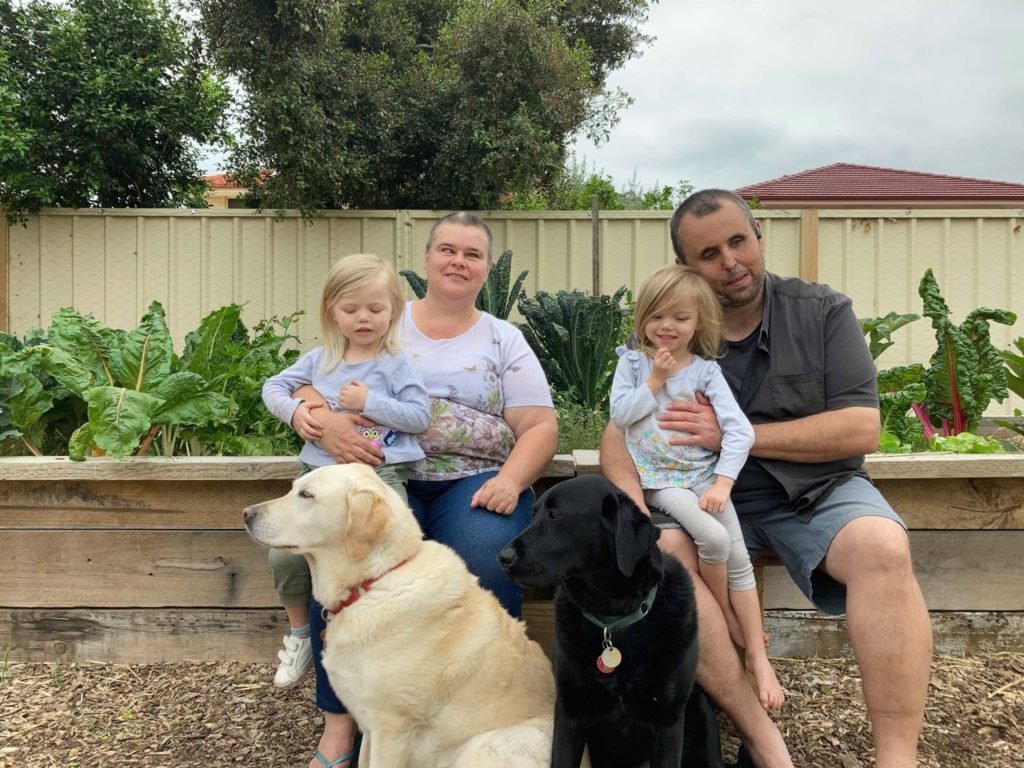
Danny, Sam and their grandkids.
“Sam and I are both blind and with the help of a really good handyman we built some big double raised beds. The NDIS sponsored us to have [permaculture gardener] Sheryl Wiffen come over and help us get the garden going.
“Finding the right tools was important. We don’t have a wheelbarrow, we have a garden trolley because it’s really hard to pull a wheelbarrow behind you but you don’t want to use the wheelbarrow as a cane to find everything.
“We’ve found the best edging for our garden is comfrey, because you can tread on comfrey and know that you’re about to step onto the garden bed but it won’t do any harm to the plant. You’ll just chop and drop it anyway.
“We keep a map of what’s where. We’ve had to keep it pretty low density so we can keep track of everything. If we have really big beds, it’s not easy to find what you want to find if you can’t see it.
“It’s all sheet mulched, with all of our leafy greens, eggplant, climbers, snowpeas, cucumbers, tomatoes, macadamia tree, comfrey and coffee plants.
“We’ve got veggies, a wormfarm, and we found an old bathtub and put fish in it. And we’re experimenting with watermelon, rockmelon and strawberries.”
Q: You’re growing watermelon?
“We’re trying to. Sheryl brings some interesting things over and we put them in and give it a shot. [laughs].”
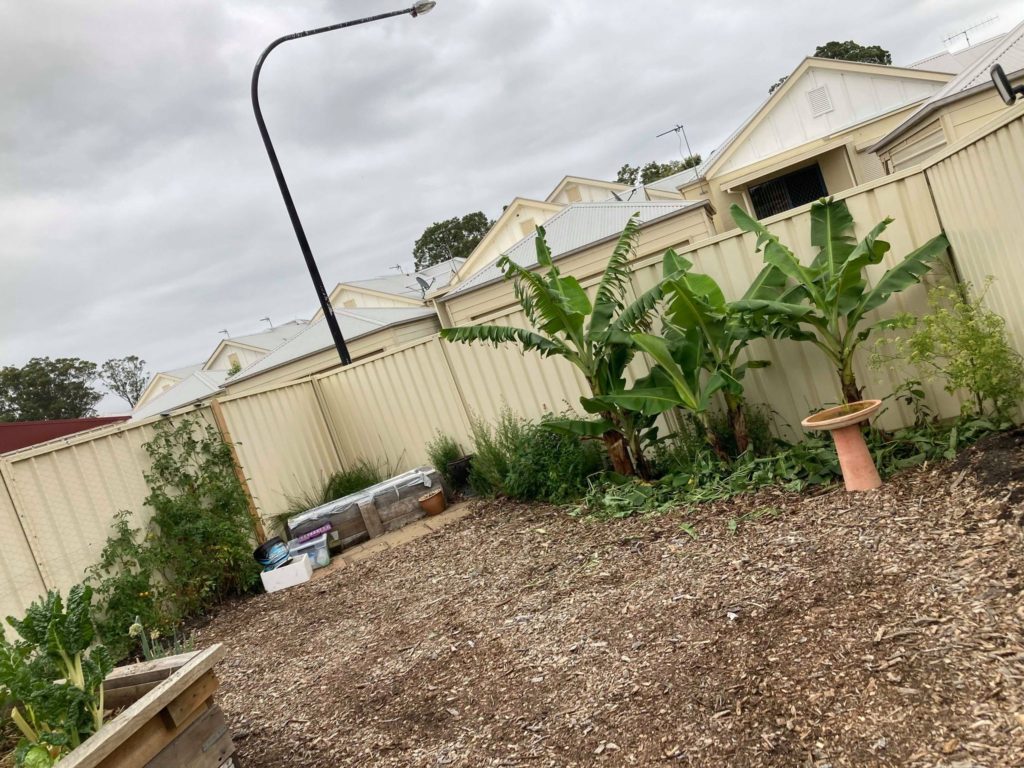
Q: What do you love about gardening and permaculture?
“It’s nice just getting out and doing something, taking my mind off technology and off the world ending [laughs]. We were hoping we could find some neighbours to help us make use of the space and share the produce, that hasn’t happened. But we take stuff to the community grocer in Port Kembla. We make quite a few deliveries to the Wollongong Homeless Hub. So we are trying to make some community out of it as well.”
Q: You’ve been to a Green Connect Dig Day, how did you find that?
“I’ve been to a couple of them. That was great fun. We had to get a support worker, just so Green Connect wouldn’t be liable if we fell down a hill or something.
“It was nice knowing that everything I pulled out of the garden wasn’t something I shouldn’t pull out, because we were stripping the beds down, getting ready for the next crop.
“I met some lovely people. We’ve lived down here for 18 years, but we haven’t known that many people because all my work was in Sydney. So we were always struggling to find a place in the community. Since we got into permaculture, and my wife and I are both musicians so we’ve gotten into the music scene as well, and we just seem to keep running into the same people over and over again. There are a lot of good people who do the same sorts of things as we do. That makes living through the end of the world a lot more pleasant.
“We have mental health issues and this absolutely helps.

Q: How can permaculture events and spaces be more inclusive of people with disabilities?
“We’ve found that the permaculture is a lovely, inclusive community. It talks about everyone with every ability has a place that they can fit in and a role that they can play. But to be totally honest, when it comes to disability, chronic illness and neurodiversity, I sometimes think we’re out of sight, out of mind.
“My wife Sam and I formed a group called All Ability Permaculture on Facebook. We started it to talk about ways we could develop guidelines to make permaculture more accessible.
“One of the things we came up with was using zones in community gardens or permaculture sites to indicate whether they are suitable for different abilities. So, for example, we can design gardens to have a zone that is accessible for those in a powered or manual wheelchair. And then have another zone that has an incline so it’s accessible for crutches or limited mobility. Another section might not have heaps of flowers or insects so it would be good for people who might be overwhelmed by sensory issues.
“This is the difference between equity and equality. There are people who physically or intellectually can’t do as much as other people, but that means they then either have to rely on charity — which is a horrible thing — or they have to miss out on opportunities or support that other people get.
“We can definitely be doing a lot more to make it more inclusive. Everyone can contribute something.
“When things are on a steep incline, like a lot of permaculture sites are, it’s inaccessible to a large number of people with disabilities. But if you have areas that have enough clearance, and are not too much of a slope, then some of those areas can be accessed. We can get creative with solutions, for example, can we raise a chair up so people in a wheelchair can get their hands in the dirt, similar to a pool hoist.
“It’s important to reach out to people with disabilities and neurodiversities and ask them these questions, because that is the best way to find out what is required. We should be able to find ways to make it more inclusive of everyone, because what permaculture offers is life-changing.
“In Melbourne there are one or two different perma-sites that have involved neurodiverse people and people with mental health issues and it’s been very successful.
“I just think it’s an untapped market for permaculture and it’s a really important part of our social justice, that everyone is able to find something that they can be involved in. Even if you don’t build a big garden, even if it’s just a small environment for frogs, or put a bunch of flowers in to attract native bees. All of that makes a difference.”
Further reading:
Accessing Permaculture for people with chronic illness and/or disability
Incorporating Disability Access and Therapeutic Spaces in Permaculture Design



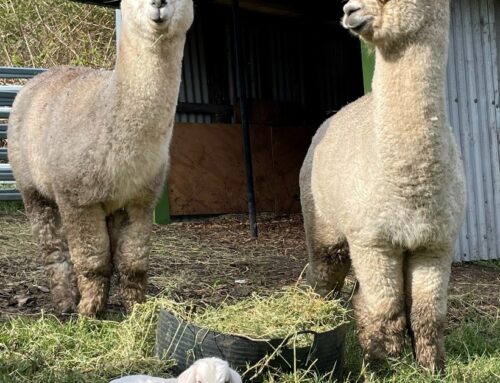
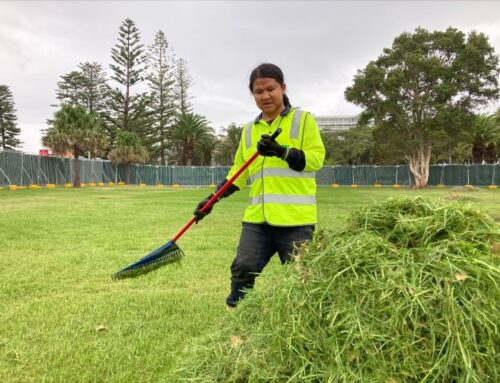

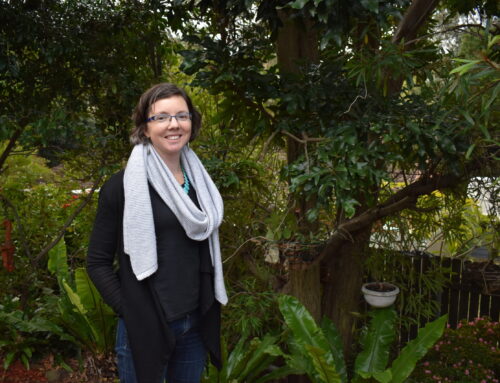
Leave A Comment
You must be logged in to post a comment.